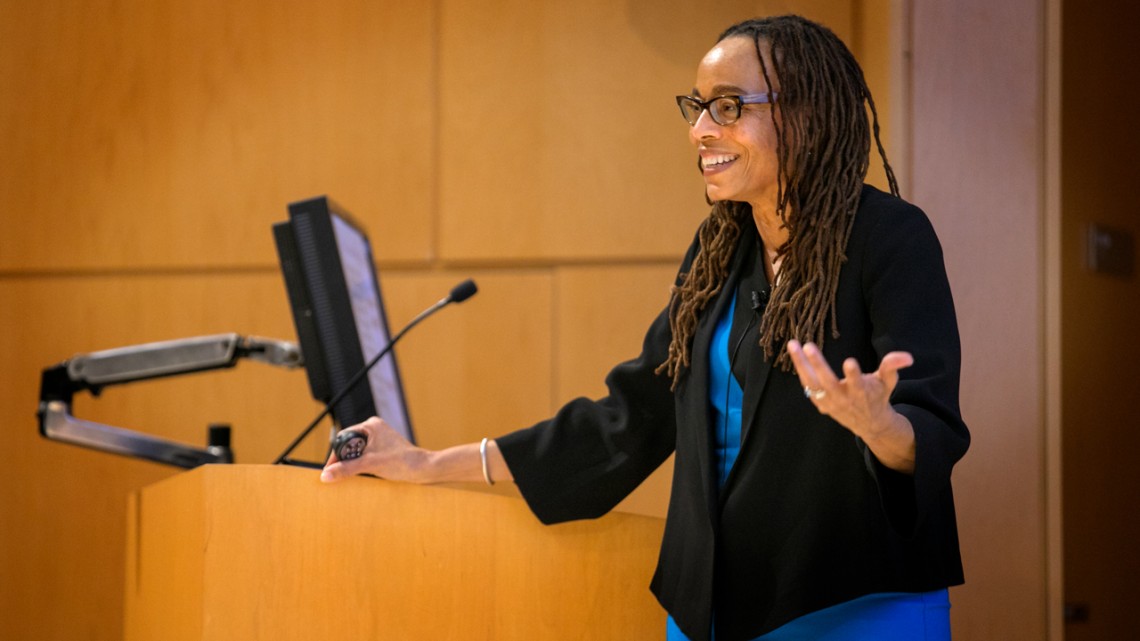Abolish race correctionPosted in Articles, Health/Medicine/Genetics, Media Archive, United Kingdom, United States on 2021-08-18 15:19Z by Steven |
The Lancet
Volume 397, Issue 10268 (2021-01-02)
pages 17-18
DOI: 10.1016/S0140-6736(20)32716-1
Dorothy E. Roberts, George A. Weiss University Professor of Law and Sociology; Raymond Pace and Sadie Tanner Mossell Alexander Professor of Civil Rights
University of Pennsylvania, Philadelphia, Pennsylvania
Several years ago my daughter sent me an alarming text. She copied the results of her routine blood work and wrote, “Look at eGFR!”. Under the estimated glomerular filtration rate (eGFR) were listed two numbers—one for non-African Americans and a higher one for African Americans. I was floored. Did this automatic adjustment mean the doctor interpreted my daughter’s eGFR differently based simply on her racial identity? The test’s categories themselves made no biological sense. “African American”, like all racialised populations, is a socially constructed grouping. In the USA, individuals with any amount of discernible African ancestry fit the definition—irrespective of the rest of their ancestral backgrounds. Although my daughter and I identify solely as Black, my mother was a Black Jamaican and my father was the son of white Welsh and German immigrants to the USA. The eGFR disregarded the fabricated nature of the racial distinction it made in calculating kidney function.
I later learned that eGFR race “correction” stems from study findings that participants who self-reported as Black, on average, released more creatinine than white participants for a given kidney function, which historically was attributed to Black people’s assumed higher muscle mass. Recent studies have challenged the muscle-mass hypothesis, but the upward adjustment for all Black patients remains embedded in eGFR calculations. Whatever the flawed rationale, there must be a better way to measure kidney function accurately than by using race—a social classification whose delineations change across time, geography, and political priorities.
Yet misguided ideas about race continue to feature in medicine. I was also dismayed when data on COVID-19 cases and deaths revealed staggering—and strikingly similar—racial disparities in the USA and the UK. As of Dec 10, 2020, the age-adjusted US mortality rates for COVID-19 for Black, Latinx, and Indigenous people were more than 2·7 times higher than for white people. The greater COVID-19 burden on these populations is not surprising: it stems from structural racism that impaired their health before the pandemic—eg, disproportionate exposure to unhealthy food, environmental toxins, shoddy housing, inadequate health care, and stress from racial discrimination—and forced them into risky front-line jobs with greater exposure to infection. Yet some researchers speculated that these unequal outcomes might be caused by Black people’s innate susceptibility—potentially resuscitating the same false racial concepts that underlie race correction.
My 2011 book, Fatal Invention: How Science, Politics, and Big Business Re-create Race in the Twenty-first Century, challenged the resurgence of biological concepts of race in genomics, biomedical research, and biotechnologies. As I wrote: “the delusion that race is a biological inheritance rather than a political relationship leads plenty of intelligent people to make the most ludicrous statements about Black biological traits”. Since then, I have warned dozens of audiences about the dangerous persistence of this racial ideology. Yet I have encountered resistance from many doctors, who tend to defend their use of race by saying it’s only part of a nuanced evaluation of many factors meant to produce more accurate diagnoses and therapies. But the eGFR race correction isn’t nuanced at all—it’s an automatic, across-the-board adjustment. It asserts that Black people, as a race, are biologically distinguishable from all others…





